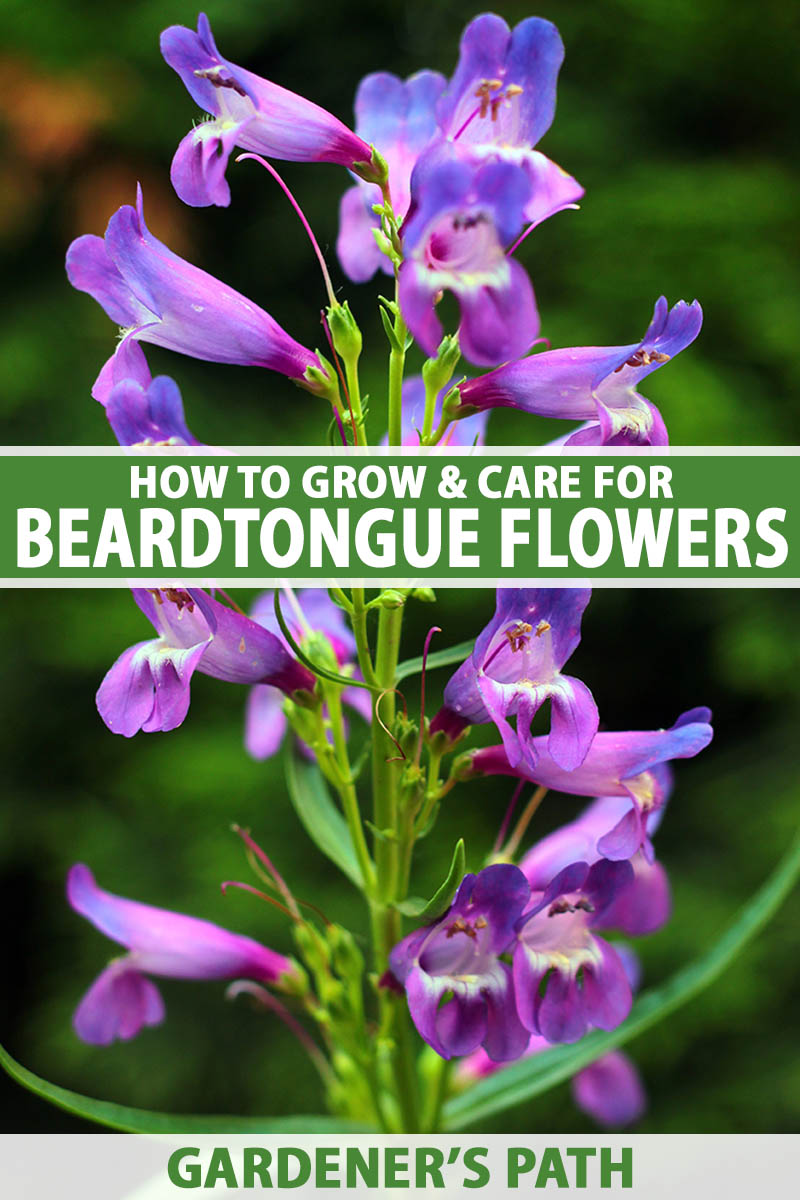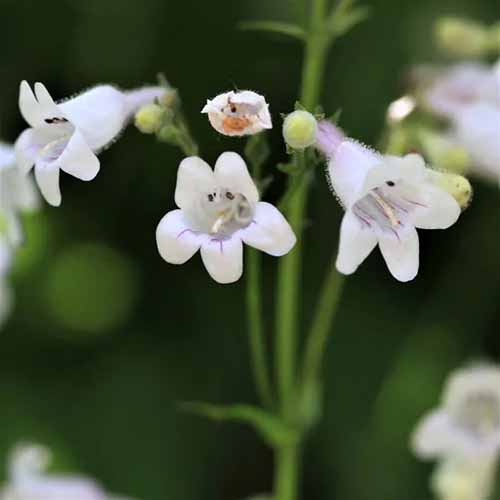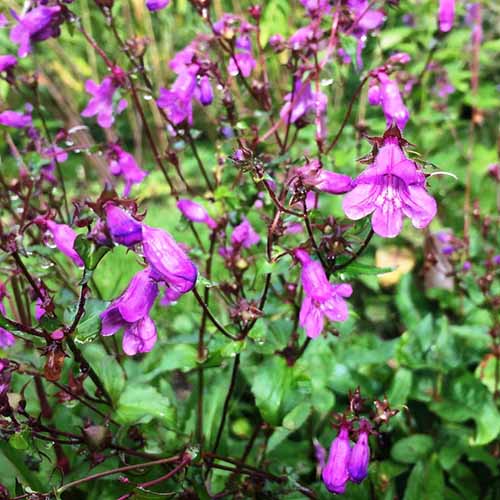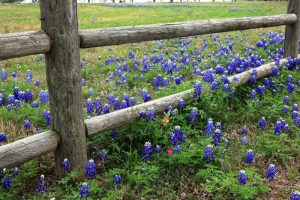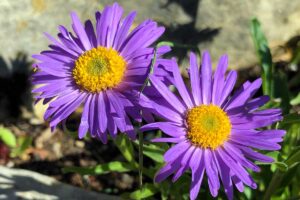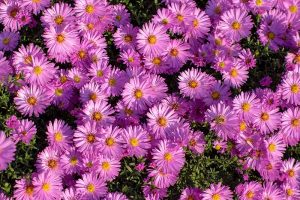Penstemon spp.
Beardtongue plants (Penstemon spp.) range across North America and come in a kaleidoscopic array of colors suitable for a variety of different environments.

We link to vendors to help you find relevant products. If you buy from one of our links, we may earn a commission.
Fancy a hot pink species for your rock garden? You got it. How about a dreamy white one tolerant of wet soils? No problem.
Within this diverse and wide-ranging genus, you can truly have all your heart desires.
Read on to find out more about growing this hardy wildflower. Here’s what I’ll cover:
What You’ll Learn
What Are Beardtongue Plants?
Bright, beautiful beardtongue plants bloom throughout summer. Hardy in USDA Zones 3 to 9, there’s a Penstemon for all but the most extreme climates.
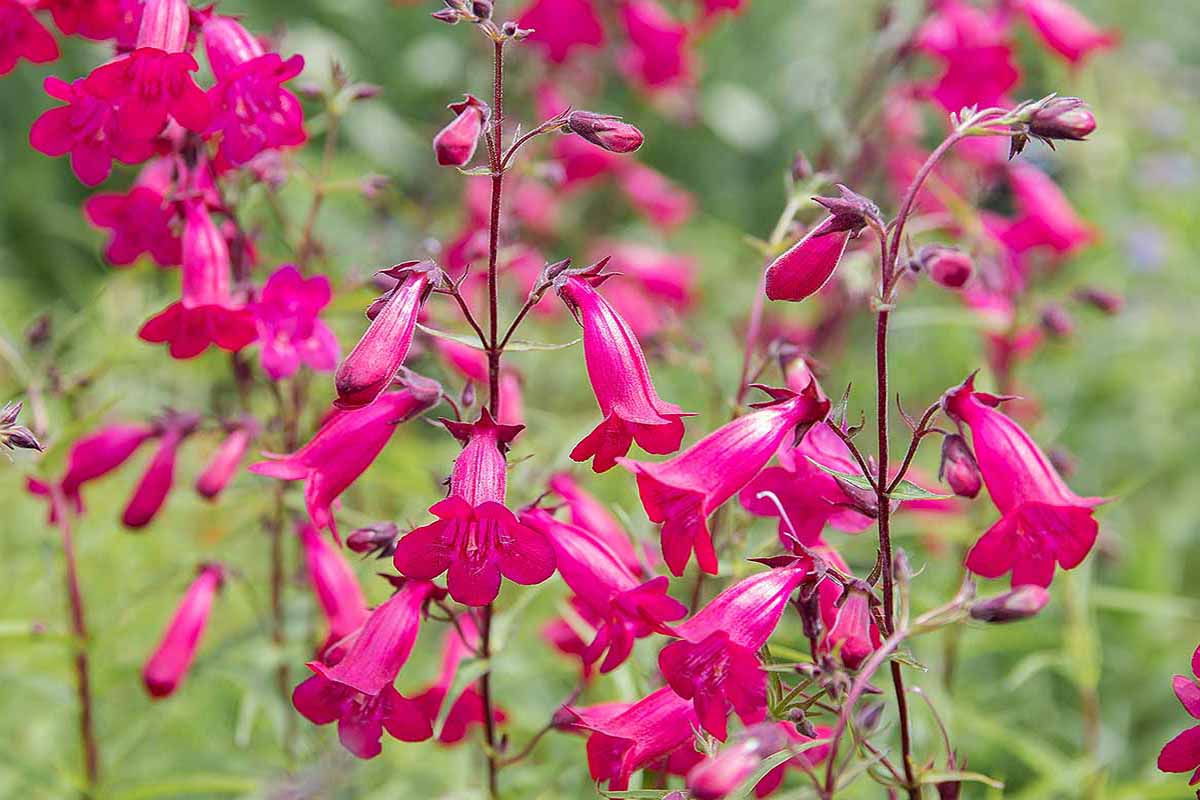
Candy floss pink, indigo blue, or white with purple polka dots, these wildflowers attract lots of different pollinators with their colorful displays.
Belonging to the plantain family, Plantaginaceae, the beardtongues are one of the largest genera of plants native to North America.
Boasting around 270 species, these plants are endemic in every state in the USA except Hawaii, and present in almost every province in Canada. A few species range as far south as Guatemala.
Formally classified in the foxglove family, Scrophulariaceae, the beardtongues certainly look more like the snapdragons and figworts also in this group. They have the same long, tubular flowers, and slender, protruding stamens which give them their common name.
However, recent DNA evidence revealed the genus Penstemon is actually more closely related to the lowly plantains, the bane of every lawn-loving gardener in the world.
The beardtongues may be either herbaceous plants or woody shrubs. Although their foliage can be quite diverse, their flower morphology unites the genus and is a good characteristic to use in identification.
Their bisexual flowers are fused into a long tube with a prominent lower lip used as a perch by pollinators.
Sometimes these flowers are arranged into racemes along a stem, other times they occur in a terminal cluster known as a panicle. Color is not a good identification feature as this genus is hugely variable.
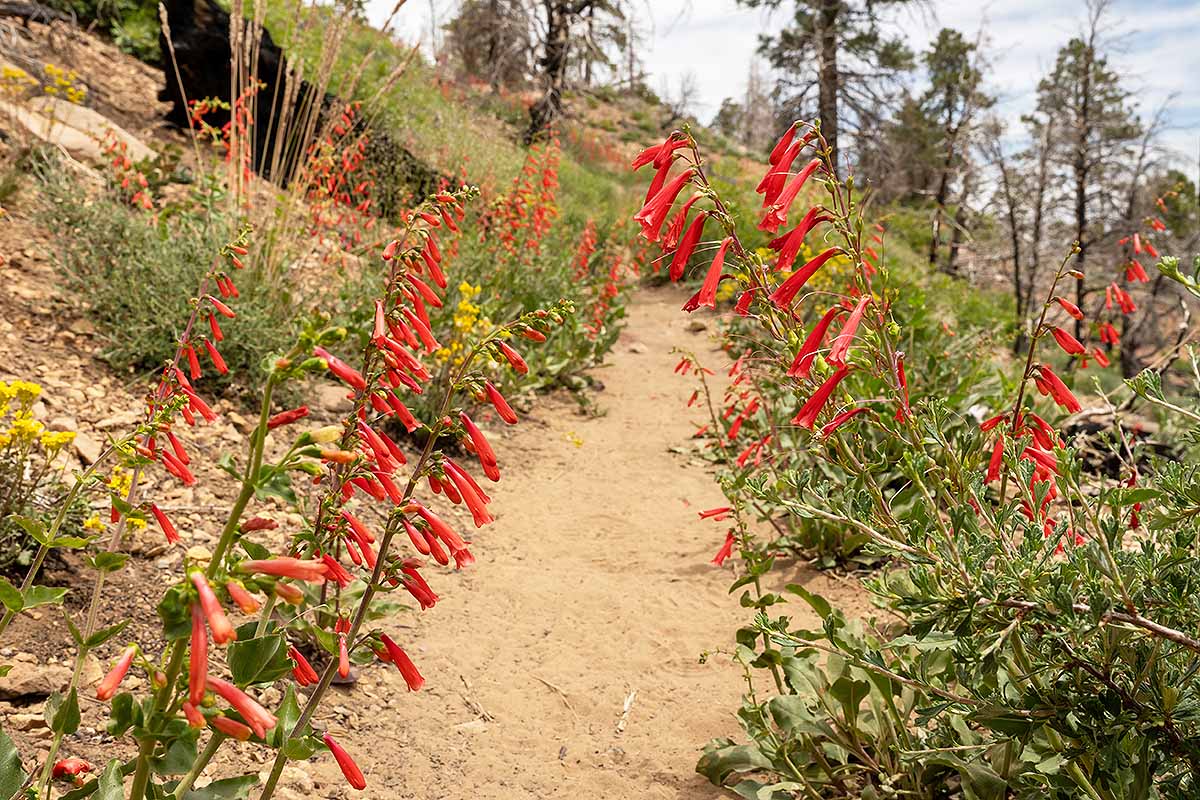
The American Southwest is the epicenter of diversity for the beardtongues.
Generally, these plants like freely draining soil and plenty of sun. However, across their range, Penstemon species can be found in wet alpine settings, rocky sunbaked locations, unmowed meadows, moist stream banks, and sandy sagebrush flats.
Whatever the conditions in your garden, I assure you, there’s a beardtongue that can match it.
Cultivation and History
Although the genus is primarily North American, Penstemon has been the object of much adoration and hybridization across the ocean in Europe.
In fact, over 22 Penstemon species and cultivars have received the Royal Horticultural Society’s Award of Garden Merit.
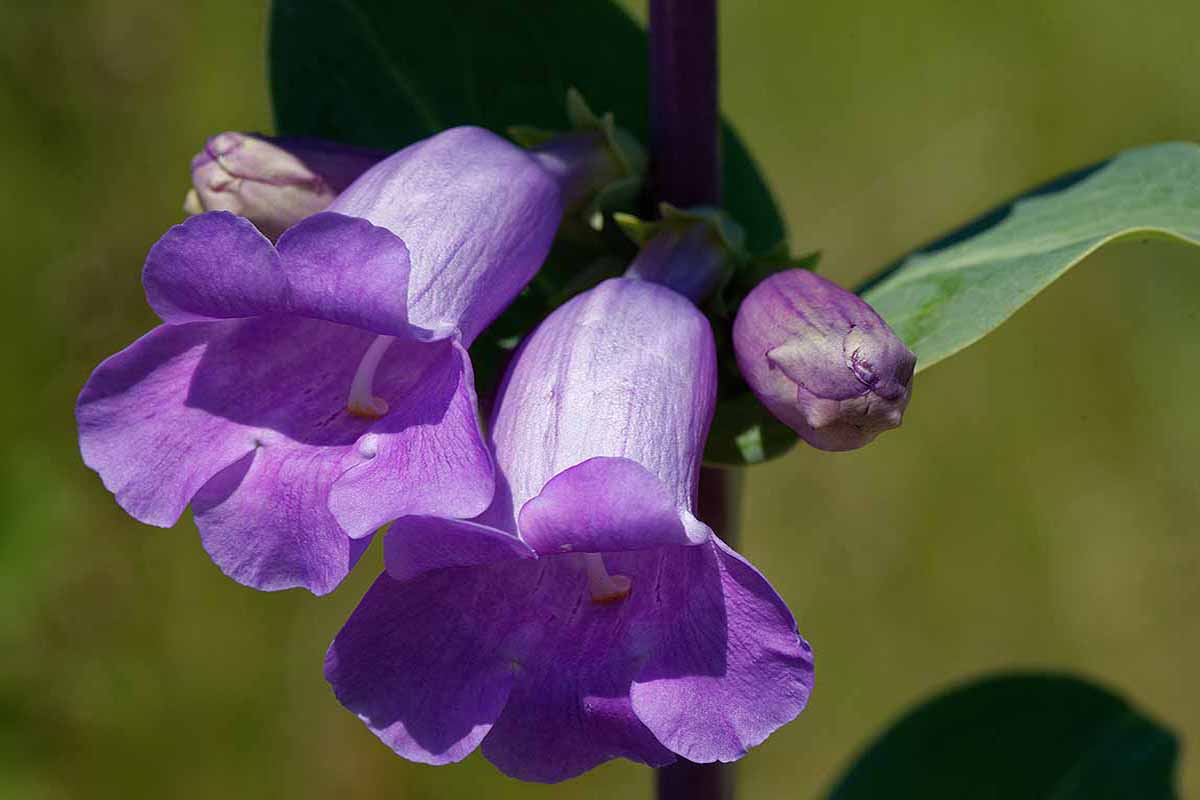
The genus itself is named for its fuzzy fifth stamen, and has been the subject of intense fascination on its home continent. Penstemon societies and clubs abound in North America. The genus even has its own festival in Arizona.
Historically, many tribes of native people utilized decoctions of the roots and foliage to make medicines for both animals and humans.
The anti-inflammatory compounds present in the plant’s tissues were used to heal joint pain, among other things.
Some of the originally described 270 species in this genus may now be extinct.
As aridification of the American West progresses and habitat destruction increases across the native range, places where these wild species can thrive is diminished.
Penstemon Propagation
There are three main ways to get beardtongue plants established in your garden, which we’ll go over here.
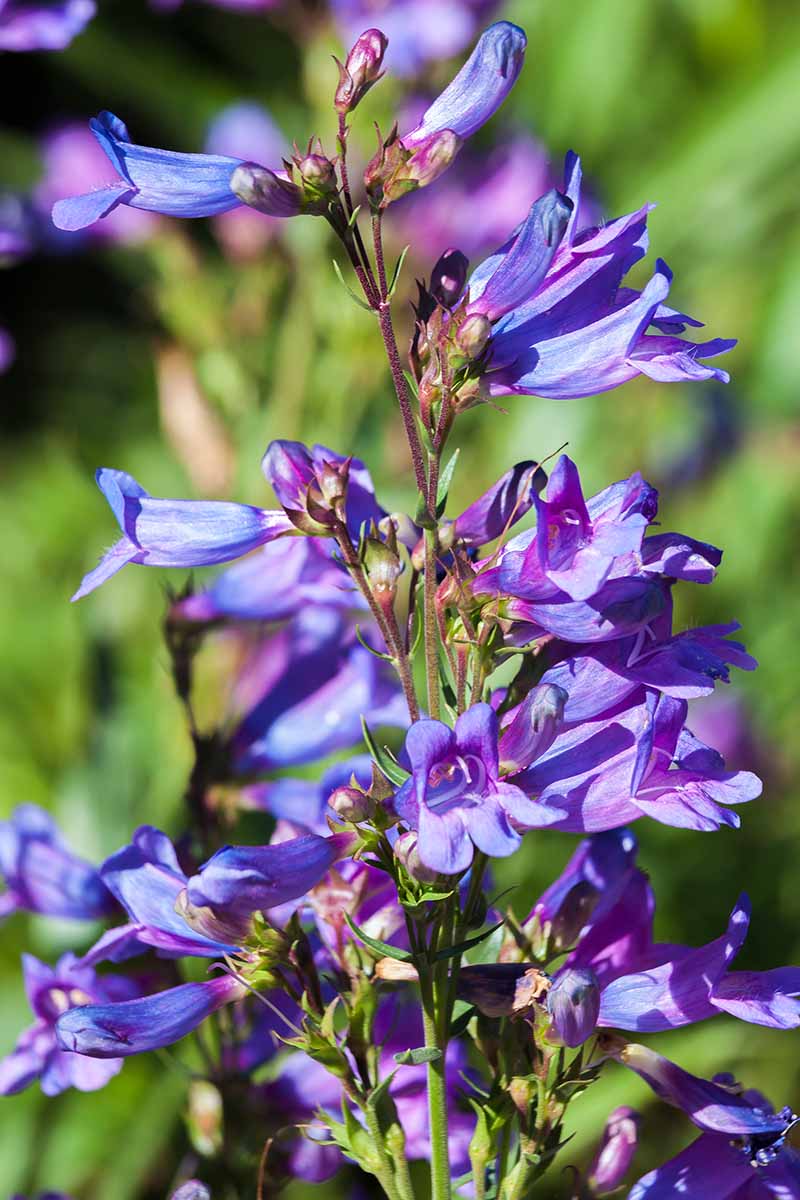
Taking cuttings is a great way to get robust plants in just one year, as opposed to sowing seeds, which take a couple of years to reach flowering size.
Plants purchased in pots may also be transplanted into the garden.
Overall, these plants are fairly easy to grow, but the individual needs of each species or cultivar may vary.
Make sure to research the preferences of your chosen plant while following these general guidelines.
From Seed
If you live in North America, you’re in the native range of this genus. Why not try your hand at collecting seed from the wild?
If you’re up for this challenge, identify Penstemon when it blooms during the summer, and is most conspicuous. Always make sure you have permission to gather seed if you’re not collecting on your own land.
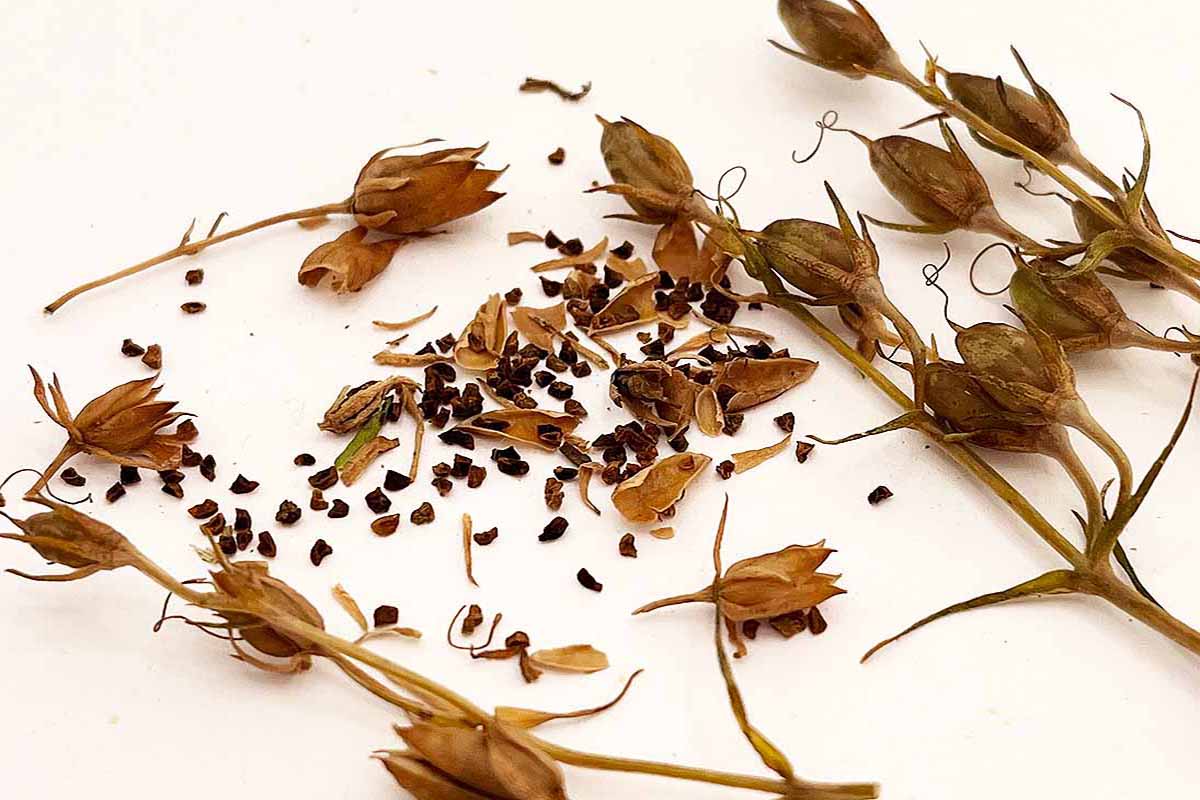
Once you find a population, watch as the blooms senesce and fruit starts to form. Pay particular attention to the capsule that contains the seed.
When adequately ripe, this structure will turn brown and almost papery. This is when you want to harvest, right before the capsule splits to disperse hundreds of teeny-tiny, dark brown seeds.
Usually, this happens in late fall, although it varies from species to species.
Collect the seed into an envelope, or a breathable cloth bag. Take only about 10 percent of the available seed so natural dispersal can still take place and wildlife that rely on this food source won’t go hungry.
Most species of beardtongue require cold stratification, or prolonged exposure to cold temperatures. Although this can be done in the fridge, I prefer to let mother nature do this work for me and sow the flower seed directly into the garden in the fall.
Choose a site in the garden that is free of weeds and brightly lit, with well draining soil. Cultivate the top inch of the soil and scatter your seeds generously over the surface.
Cover lightly with a sprinkling of soil or sand, just to hold down the seeds and ensure they don’t blow away.
Leave a label in place with the name of the species you planted and the date you sowed the seed. This will mark the area you planted, and help remind you to water the area once or twice a week when spring arrives.
Seedlings should emerge in spring. Thin out your new plants so there is about an inch of space around each one, leaving the most robust of the seedlings.
Remove any newly sprouted weeds, too. You might have to wait a couple of weeks before weeding to make sure you can distinguish the typically long, slender leaves of beardtongue from weeds.
Take care when weeding, however, as many young plants don’t look like the mature versions of themselves right away.
Make sure your seedlings are watered during dry spells. Although these species are drought tolerant once mature, seedlings have tiny, shallow root systems, and will need extra hydration if the surface of the soil is dry.
If you want to transplant your new baby Penstemon plants elsewhere, move them in the fall, after the active growing season has passed.
From Cuttings
Cuttings are most successful when harvested from the growing tips of beardtongues before they bloom. Early summer is a good time to do this.
First, prepare several four-inch pots by filling them with sterile, moist potting soil mixed with a little fine horticultural grit.
Using a sharp pair of scissors, take four- to six-inch cuttings from stems that have no flower buds. Gently remove all but the top pair of leaves from the cuttings and bury the bottom two inches in your prepared containers. Water well.
Keep your cuttings in bright, indirect light for six to eight hours a day. You may have a nice sheltered place outside to do this, but if not, a bay or picture window will work too.
Make sure your Penstemon cuttings stay moist, but not soaking, until they take root. This should happen in about four to six weeks.
Once your cuttings are firmly rooted you can transplant them into the garden. However, you may grow bigger, stronger plants if you keep them indoors over winter and plant them out the following year.
If you do this, you may need to pot them up to six-inch containers if the soil starts drying out rapidly between waterings.
Transplanting
The easiest and most straightforward way to get beardtongues growing in your garden is to purchase a potted plant from a nursery.
Choose a freely draining location in the garden that receives ample sun. Depending on the species you’ve chosen, this could be a rock garden, a brightly lit border, or in a meadow.
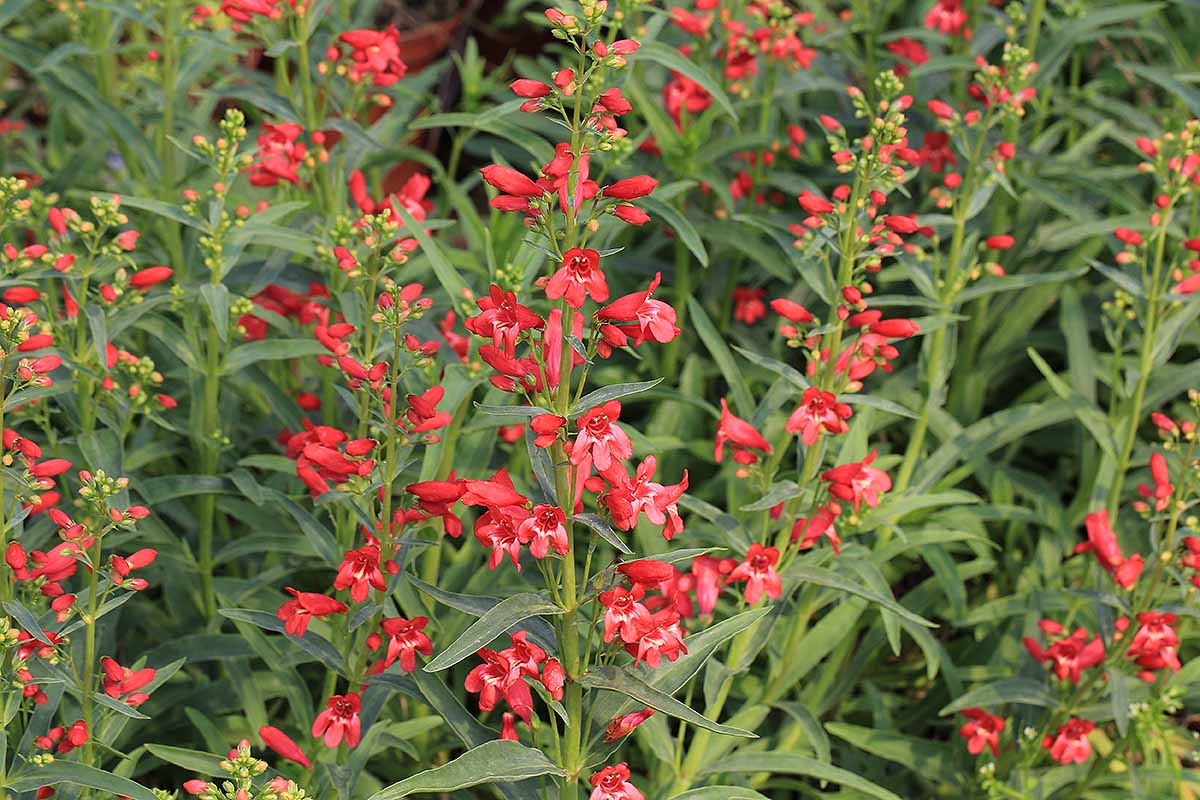
Dig a hole just a little wider than your plant’s pot and bury your beardtongue so the top of its root ball is level with the ground. Backfill with soil and water well.
Although these plants are drought tolerant once established, you’ll want to water at least once a week to help your beardtongues settle into their new home.
If any particularly dry weather comes along, give them an extra drink on top of their regular dose, too.
How to Grow Penstemon
Given the tremendous diversity present in this genus, the growing advice given here should serve only as a guideline.
This is particularly true when it comes to considering which Penstemon to plant.
A species native to the sunbaked flats of New Mexico is unlikely to thrive in a rich meadow in Maine. Do your research, and choose wisely.
Having said that, most beardtongues do prefer freely draining soil. Even denizens of the desert can be grown in rock gardens or gritty soils in the northern states, so long as your climate isn’t too cold.
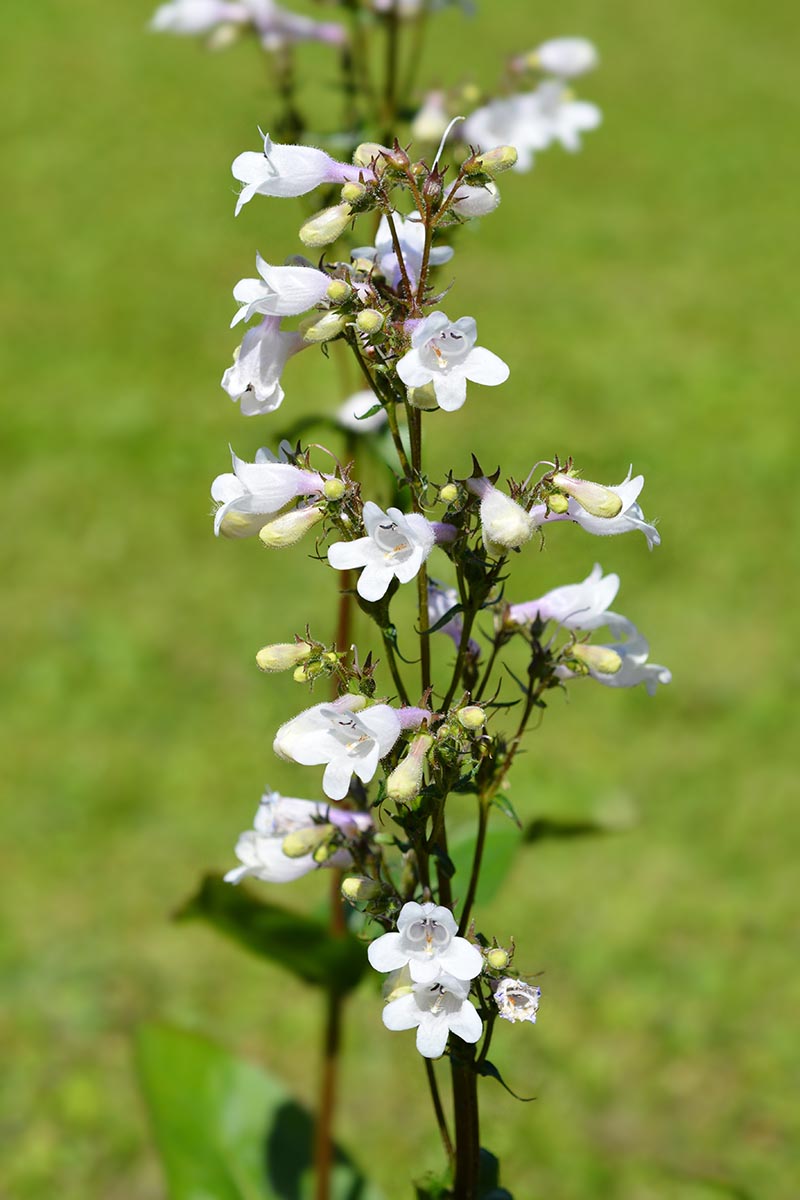
Make sure to site your plants somewhere with plenty of sunlight.
Some species, such as the northeastern P. digitalis, can grow in partial shade along the edge of a woodland meadow, for example, but these will be less floriferous than when planted in full sun.
Many species look terrific grown en masse in places where they can really spread out.
The aforementioned P. digitalis, is an excellent naturalizer and will grow well when planted in unmowed grass. This species also self-sows and will naturally spread if sited in optimal conditions.
Other members of this varied genus, such as the Mexican native Hartweg’s beardtongue, P.hartwegii, and bearded penstemon, P. barbatus, can be grown as annuals in colder climes and are ideal for planting in large clusters in a rock garden.

Don’t be tempted to fertilize Penstemon unless you see obvious signs of nutrient deficiency such as yellow leaves, or scant flowers.
These species are adapted to lean soils and, if planted in the right place, won’t need any extra feeding.
Once established, beardtongue plants are drought tolerant.
As with all garden plants, it’s best to water if you experience any extended dry spells, or see any signs of drought stress such as wilting leaves.
Growing Tips
- Plant in freely draining soils.
- Provide space to self sow.
- Site in a location with full sun.
- Water during dry spells.
Pruning and Maintenance
Maintenance? What’s that? If you’re the kind of person that likes to kick up your heels and enjoy the garden from a comfortable chair, the beardtongues are right for you.
So don’t fertilize your plants, don’t worry too much about watering them, and definitely, definitely don’t deadhead them!
Removing spent flower heads can help to prolong bloom time, however, it will also deprive your plant of the seeds that will spread it around your garden.
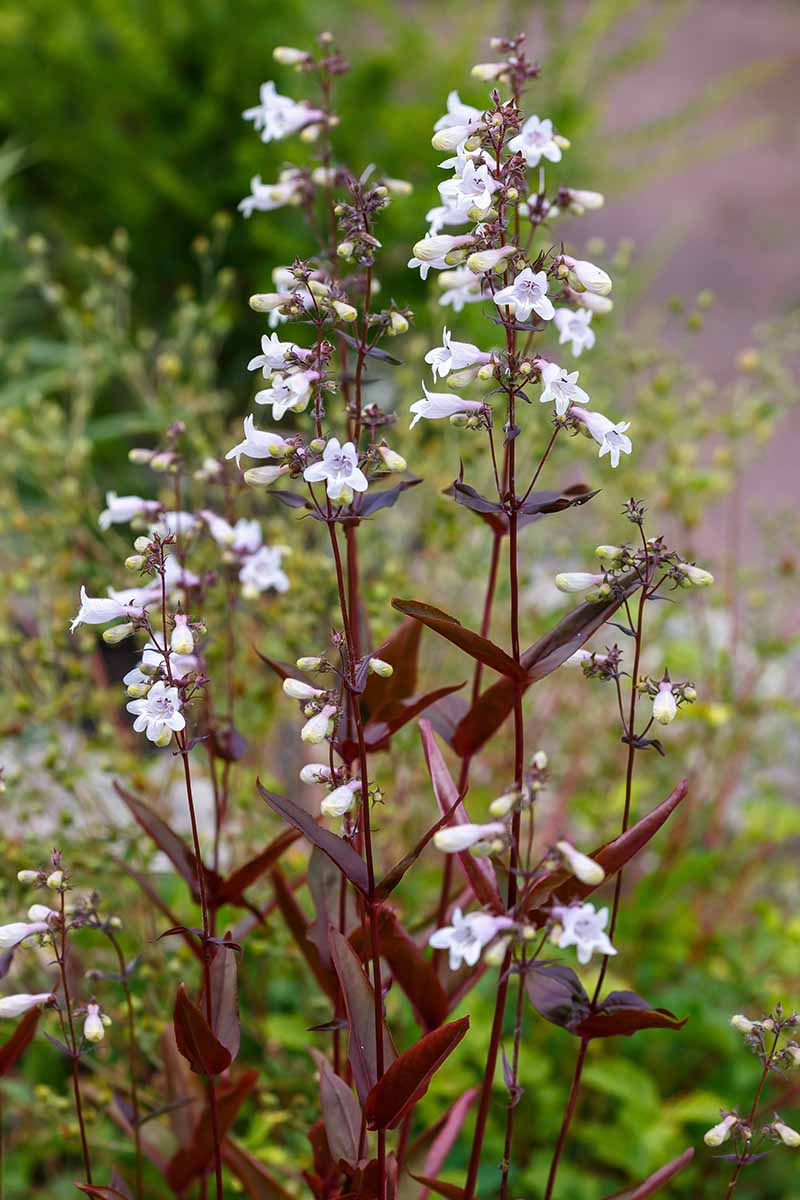
One thing you can do if you are the tinkering, meddling sort is divide your beardtongues.
This practice is less about maintaining your plants and more about increasing them. However, unlike other perennials, dividing Penstemon is not essential to perpetuating its vigor.
To divide beardtongues successfully, first determine whether you have a species with multiple root clumps growing underground or a species that grows from just a single clump of roots.
Those that form multiple root clumps, such as P.digitalis, can be divided. Those with just a single clump, producing a single stem cannot.
To divide Penstemon, gently dig up an entire clump in early spring. Using a sharp knife, separate all visible rosettes, making sure each cluster of leaves has robust roots attached.
Replant immediately, making sure the rosettes are level with the soil. Water well, and regularly, for several weeks until your division is established.
Penstemon Species and Cultivars to Select
With such an enormous amount of diversity in the genus, there are plenty of species and cultivars to choose from. Here are some of our favorites.
Digitalis
The common name of this northeastern species is foxglove beardtongue as it does look similar to its distant cousin in the Scrophulariaceae family.
Hardy in USDA Zones 3 to 8, P. digitalis can tolerate a little more moisture than many of its close kin.
Growing up to five feet high and two feet wide, foxglove beardtongue has pale cream to white flowers with a freckling of dark spots on the inside of its petals.
You can find P. digitalis available at Nature Hills Nursery.
Fruticosus
A lovely addition to a rock garden or alpine trough, this friendly little Penstemon grows a foot high, can spread to three feet wide, and sports a thatch of beautiful blue flowers in early summer.
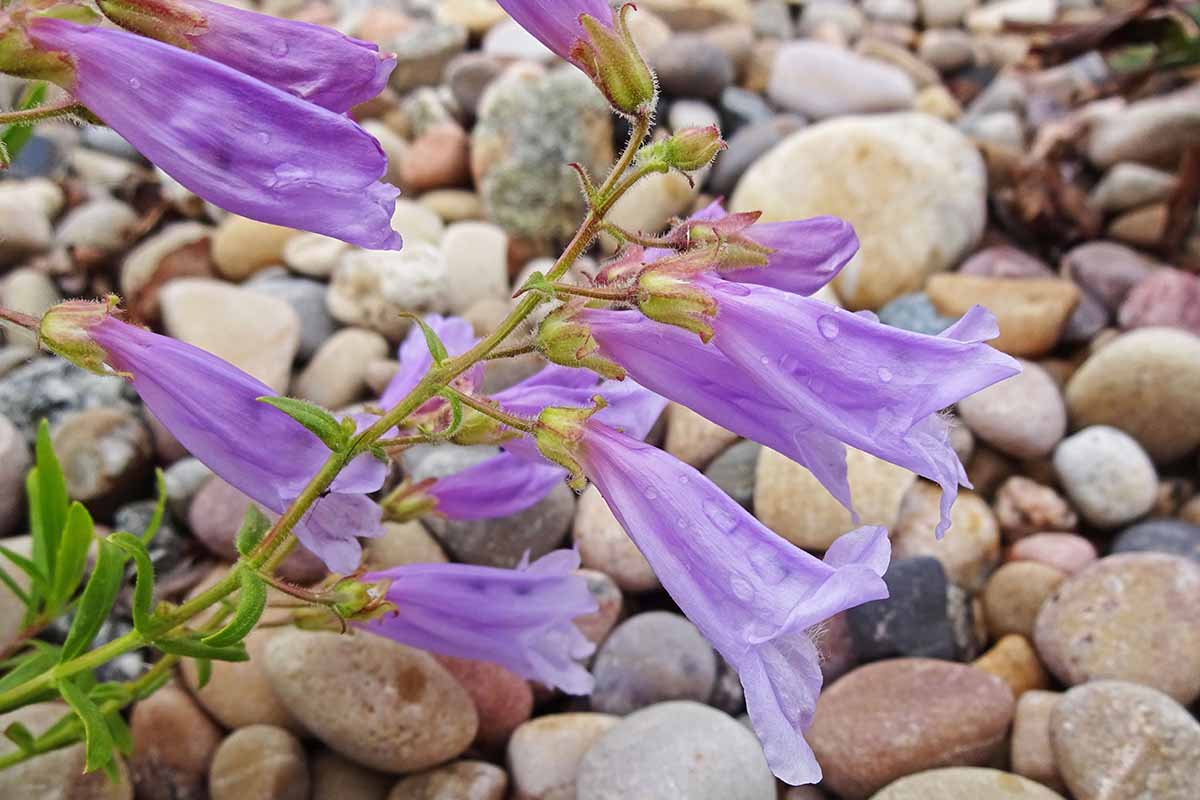
In the wild, this species grows in rock crevices, or alongside sunny, dry roads and trails. Also known as shrubby penstemon, it is hardy in USDA Zones 4 to 9.
Hidcote Pink
This recipient of the Royal Horticultural Society’s prestigious Award of Garden Merit grows up to three feet tall and three feet wide.
Sporting huge, inch-long, frilly pink flowers, this hybrid cultivar allows you to really indulge your desire for all things cute and pretty.
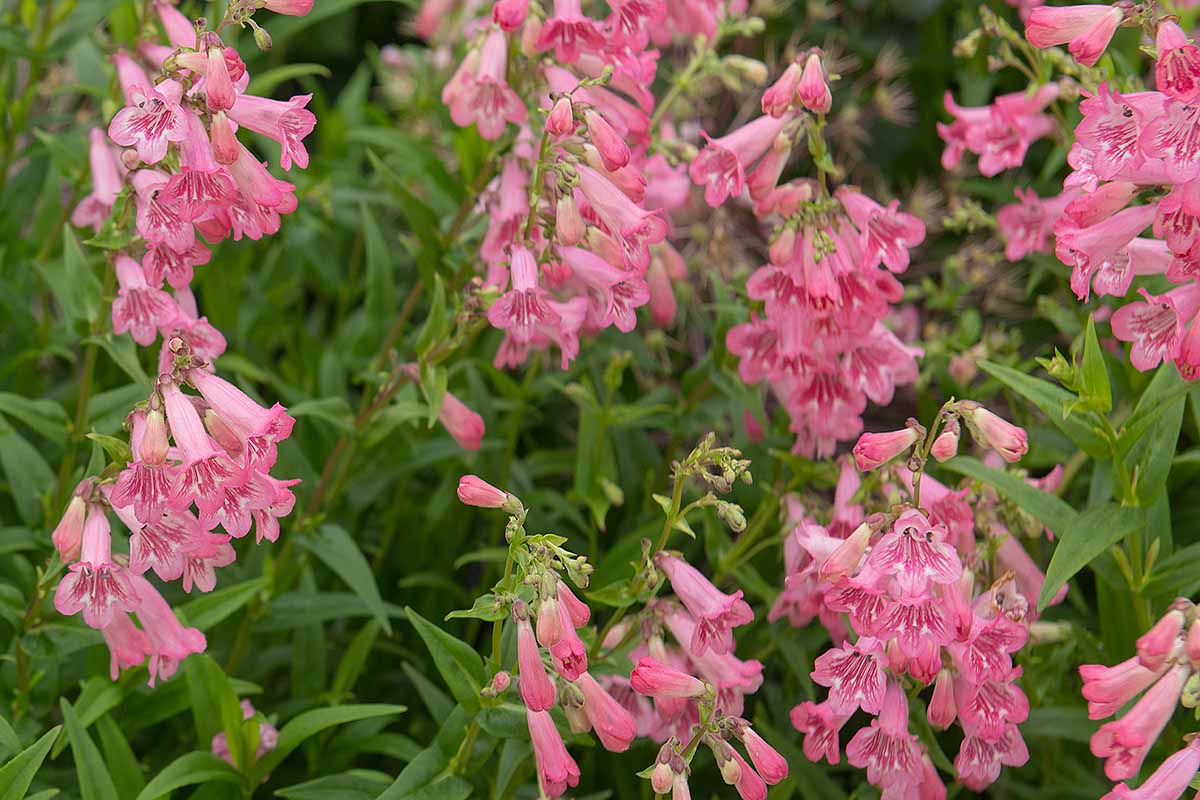
Excellent for anywhere with freely draining soil, ‘Hidcote Pink’ is also a terrific cut flower and blooms starting in midsummer – a tad later than most species in this genus.
This cultivar is hardy in Zones 8 to 10.
Newberryi
Growing only up to a foot high, this creeping, shrubby species is commonly known as mountain pride.
Native to the high elevation regions of California, Oregon, and Washington, it clings to rocks and is incredibly drought tolerant.
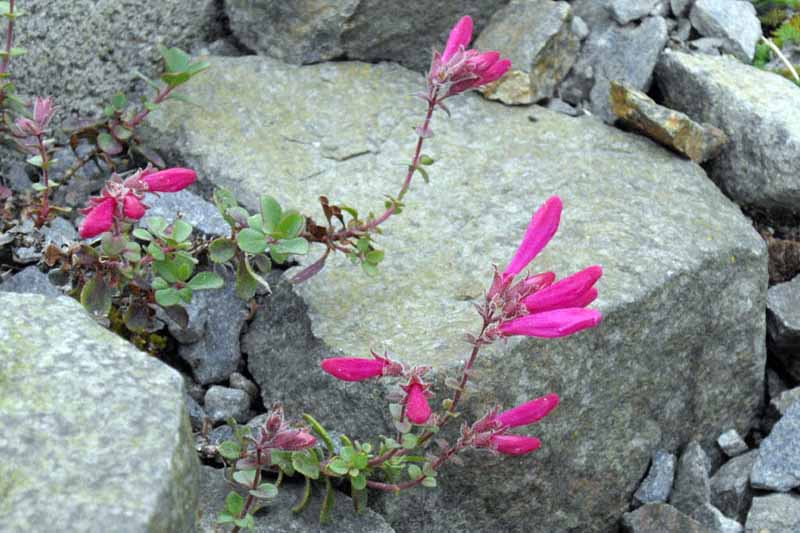
Not commonly found for sale in horticulture, this is a fun one to cut your teeth on if you have a rock garden and are up for a new challenge.
Pretty, tubular flowers appear in spring and are truly prolific. This species is hardy in USDA Zones 7 to 10.
Port Wine
Growing up to three feet wide and three feet tall, this impressive hybrid has deep, dark purple flowers over an inch in length.
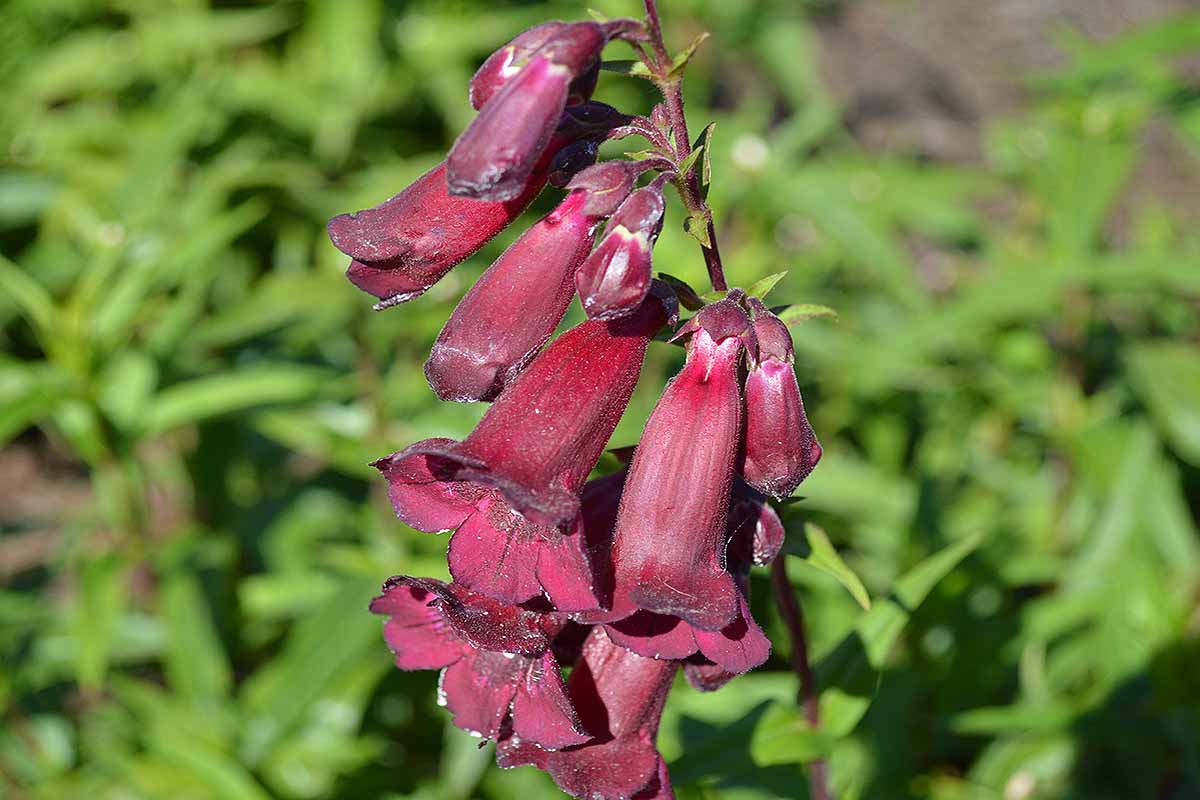
Popular in cottage gardens for its floriferous displays, this cultivar thrives in USDA Zones 7 to 9.
Rupicola
Hailing from the rainy, misty Pacific Northwest, this low lying little Penstemon grows to only four inches high.
It spreads beautifully, creeping across rocks or cascading over a pot, reaching about 18 inches wide.
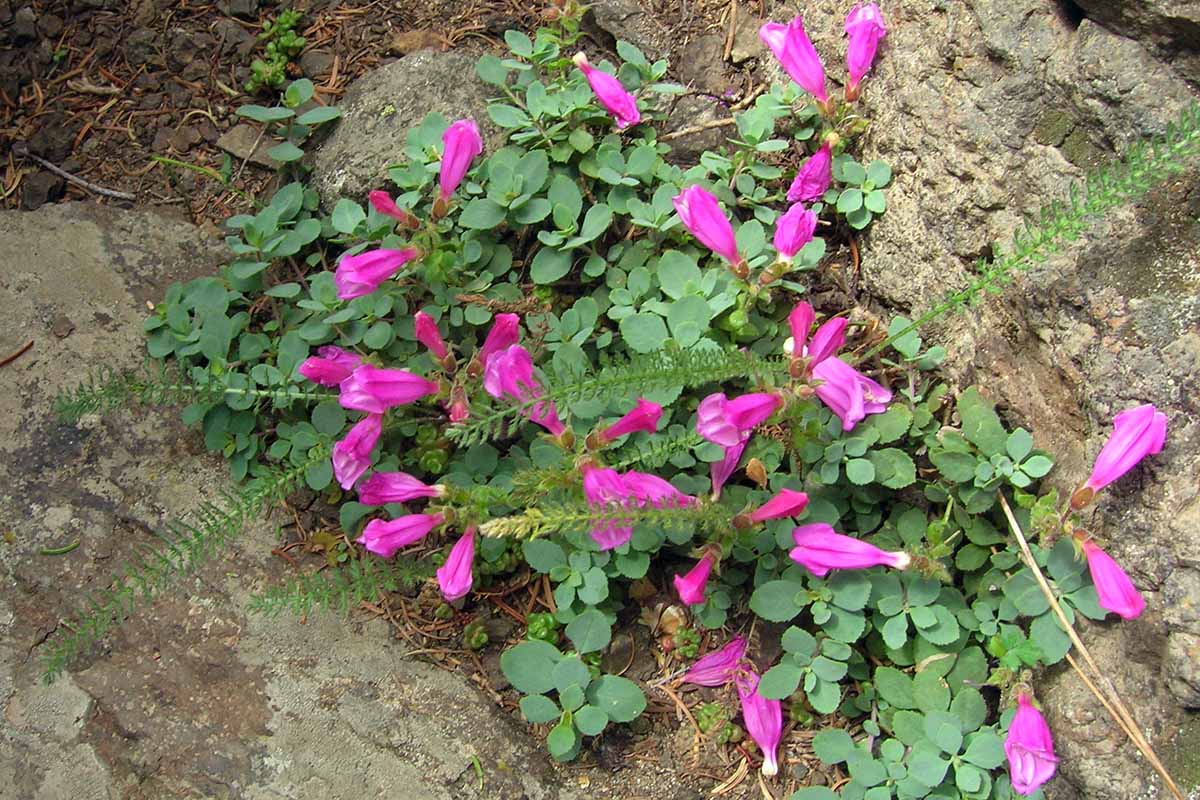
Aptly named rock penstemon in common parlance, its slender, pink, trumpet-shaped blooms appear in May. This species is hardy in USDA Zones 4 to 9.
Smalli
Growing to three feet high and two feet wide, P. smalli is a rare species of beardtongue is native to the south east where it grows along woodland edges and rocky cliff faces.
It’s an ideal choice for a rock garden in hot climates. Hardy in USDA Zones 5 to 8, this species produces beautiful, slender, purple to blue flowers.
You can find seeds available in a variety of packet sizes at Earthbeat Seeds.
Virens
Hardy in USDA Zones 4 to 8, this western North American native has some of the most beautiful electric blue flowers in all of horticulture.
Excellent for xeriscaping and rock gardening, blue mist penstemon is highly drought tolerant.
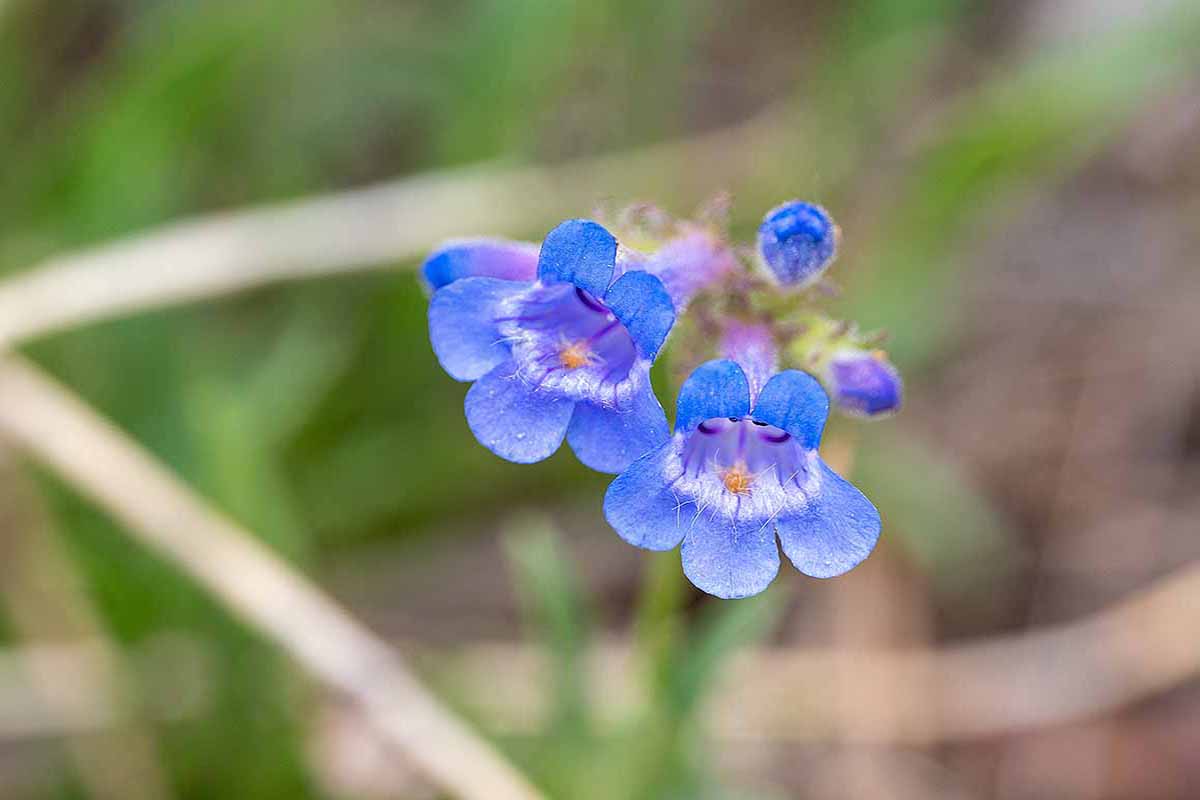
Growing only to eight inches tall, this species is great for growing in the front of the border, or for gardens short on space.
Managing Pests and Disease
The beardtongues are hale and hearty, and amazingly resistant to both pests and disease. If grown in optimal, sunny, freely draining conditions, there’s very little that will bother these plants.
Here are just a few things to be on the lookout for, in the rare instance that problems do pop up.
Disease
Most issues that arise with Penstemon are due to overwatering, or planting in a too-shady location in the garden.
Here are the most notorious diseases you might find making trouble with your beardtongue plants:
Leaf Spot
A general term for a disease caused by lots of different species of fungi, leaf spot results in discolored blemishes on the foliage.
Penstemon plants become more susceptible to foliar diseases like leaf spot when they’re stressed by overwatering, or too little sunlight. Make sure you’ve got the growing location right, and this potential issue will become a non-issue!
If you do notice signs of this unsightly fungal infection, prune off any affected leaves and destroy them by burning, or tossing in the trash.
Powdery Mildew
Appearing initially as small white dots on foliage, powdery mildew is a fungal disease that eventually progresses to coat the entire leaf surface.
Especially common in crowded areas with poor air circulation, this infection can also rear its ugly head when plants are stressed from drought, or too much shade.
Fortunately, powdery mildew won’t affect your beardtongue plants’ growth and development much. It typically occurs later in summer, after many Penstemon plants have finished flowering.
To manage powdery mildew, pull off affected leaves and burn them, or toss them in the garbage. Never compost diseased material as this will only spread the fungal spores further.
Read more about powdery mildew management in our guide.
Try to ensure that your beardtongue plants are situated in optimal conditions. As with any plant, making sure they get the right amount of sun and water will make them stronger and more resistant to disease.
Finally, when you need to irrigate, always water the soil, not the leaves. Wet foliage helps spread fungus.
Rust
Rust is another common fungal infection caused by a multitude of different fungi. The infection produces ugly, bumpy, orange blotches on leaves.
Although the disease typically won’t affect the growth and development of your plants, it’s a good idea to prune off all affected foliage and discard it in the trash, or by burning.
Overcrowded, warm, humid conditions promote growth of the fungi that cause rust. Make sure to space your plants out adequately, keep decaying foliage out of the garden, and water on the ground instead of overhead.
Fungal spores spread more easily when the whole plant is wet.
With these simple measures, rust should resolve on its own, leaving your Penstemon fungus-free.
Pests
Penstemon plants are absolutely beloved by pollinators, but lucky for us, there are very few pest insects that bother them.
You may encounter issues with common garden pests like aphids and spider mites.
Purportedly, slugs and snails can and do chew on Penstemon, though I’ve never seen it. If these plants are sited in the freely draining soils they prefer, snails and slugs should not be a big issue.
Gastropods – a fancy word for those squishy destroyers of plants – favor consistently moist areas in the garden and like to hide out under leaf litter or deep mulch.
Give your beardtongue plants good air circulation and don’t overwater. This will help to prevent slimy hoards of snails and slugs from munching on your plants.
If, however, you live somewhere like the Pacific Northwest, where high humidity and rainfall are a constant, remain vigilant! The war against snails and slugs is best waged at night, when they’re active.
You can pick them off your plants while they feed, or set up bait, barriers, or repellent. For more specifics on how to rid your garden of these pests, check out our guide to protecting your plants from gastropods.
Best Uses for Penstemon
Many beardtongue plants flower during the somewhat boring gap between June and midsummer when things in the garden aren’t exactly the most exciting.
After May’s irises and peonies wane, there’s not always a lot to look at.

Try growing one of the blue or red varieties as a colorful prelude to summer’s annuals, or plant a large swath of some of the straight species, like P. digitalis, out in a field you don’t have to mow every year.
This group of plants is wonderfully good at filling in your garden’s gaps!
Beardtongue plants are also durable cut flowers and look great in a bundle of summer’s other early risers, like ox eye daisies, catch flies, and the first purple vetch.
Quick Reference Growing Guide
| Plant Type: | Herbaceous flowering perennial | Flower/Foliage Color: | Blue, cream, orange, pink, purple, red, white / light to dark green |
| Native to: | North America, Guatemala | Tolerance: | Deer, drought, heat |
| Hardiness (USDA Zone): | 3-9 | Maintenance: | Low |
| Bloom Time: | Summer | Soil Type: | Loamy, sandy, rocky, depending on species |
| Exposure: | Full sun to part shade | Soil pH: | 6.0-7.0 |
| Time to Maturity: | 2 years | Soil Drainage: | Well-draining |
| Spacing: | 1-3 feet | Attracts: | Bees, beetles, butterflies, hummingbirds, moths |
| Planting Depth: | Surface sow (seeds), root ball even with ground (transplants) | Uses: | Beds and borders, containers, cut flower, naturalizer |
| Height: | 0.5-5 feet, depending on species | Order: | Lamiales |
| Spread: | 1-3 feet, depending on species | Family: | Plantaginaceae |
| Water Needs: | Low | Genus: | Penstemon |
| Common Pests and Diseases: | Aphids, slugs, snails, spider mites; leaf spot, powdery mildew, rust | Species: | Digitalis, hirsutus, rupicolus, smalli, virens |
Vast, Varied, and Very Dependable
From the chilly north to the sultry south, there’s a beardtongue for just about every garden. Whether you want to attract butterflies and hummingbirds, or just add a shock of color after the blossoms of May are past, these versatile plants are up for the task.
Make sure to site them in the freely draining soil they love, and ideally, give them plenty of sunshine. These hardy, pest-resistant, colorful North American natives won’t fail you.

Which Penstemon plants do you grow at home? Have you had the pleasure of encountering these wonderful natives in the wild? Which species?
Tell us about your favorite cultivar or place to grow these tough, early summer bloomers. We want to hear from you! Comments are always welcome.
To learn more about growing other North American native wildflowers, check out the following guides next:
